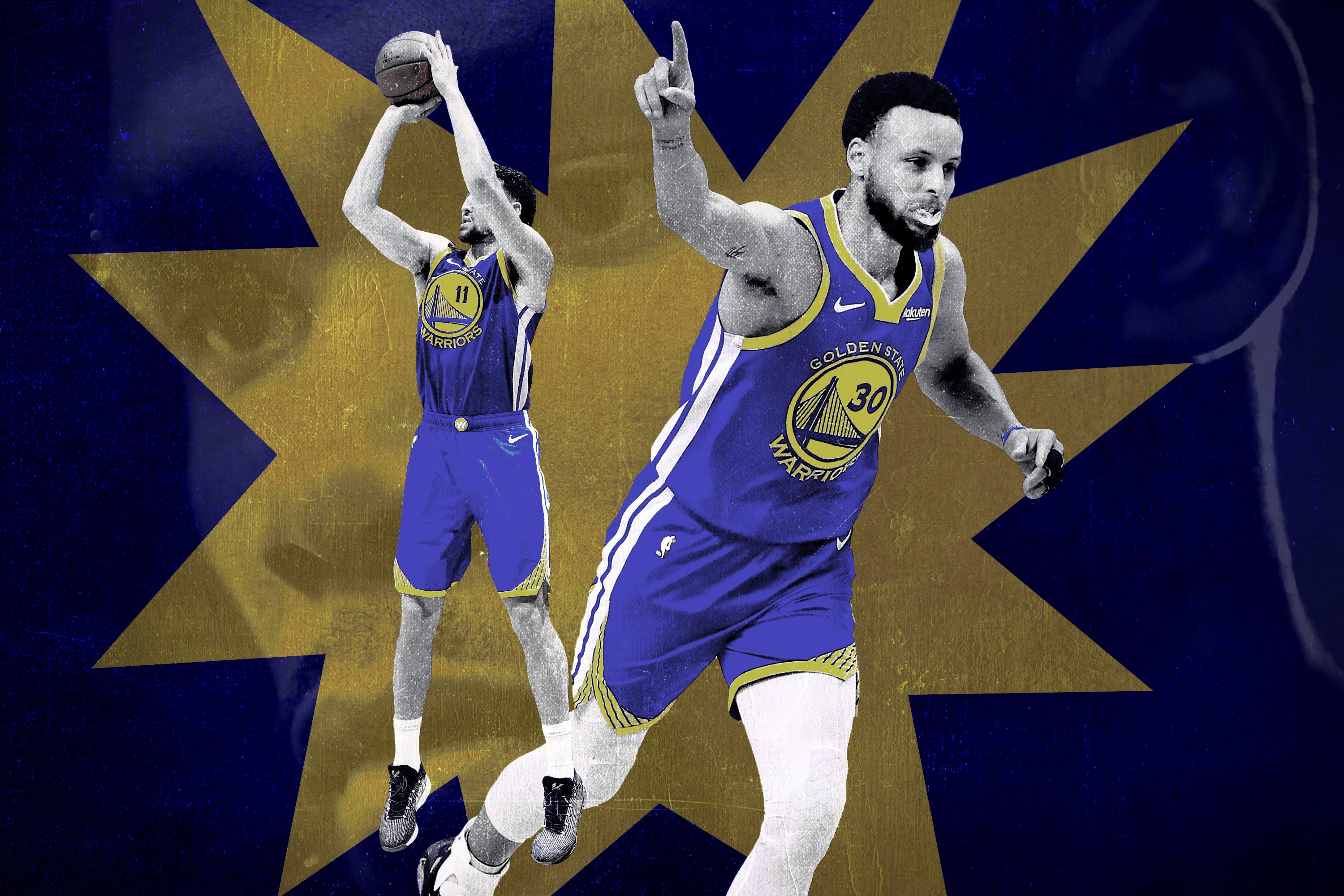
An hour before Game 5 was set to commence, Kevin Durant stepped onto the Scotiabank Arena floor to an outpouring of boos—impressive, given that the arena was still mostly vacant. He took shots around the perimeter, tossing in some of his customary off-balance pirouetting shot attempts, as if to prove he was truly himself. Cheers rang down with every miss (there weren’t many). Seeing Durant, almost eerily comfortable during warm-ups, seemed to presage a star performance by the series’ biggest missing piece.
Indeed, the fourth quarter of Monday’s thrilling 106-105 Warriors victory in Game 5 of the NBA Finals quickly escalated into a gallery of star power, with all the drama of a championship-round classic. Kawhi Leonard’s 12-point fourth-quarter symphony of pull-up jump shots was nearly legacy-defining; the stretch when Steph Curry and Klay Thompson hit three momentum-shifting 3-pointers during the final two and a half minutes to seal the game was as vintage as any Warriors performance this postseason. But it’s hard to overlook the single biggest difference: Durant played, albeit briefly.
The two-time defending Finals MVP finished with 11 points on 3-for-5 shooting in just under 12 minutes of play, finishing plus-six in the game. But before the final buzzer had even sounded, Durant had left Scotiabank Arena on crutches. An Achilles injury to the same right leg that had cost him the past nine games left him reprising the role he had in these Finals before the game: a specter looming over the series. For the Raptors, he was a manifestation of all the external skepticism that plagues the team, the asterisk that they hope to blot out; for the Warriors, a symbol of what used to be and could have been.
Durant was never afforded an opportunity to be anything else. He witnessed his value to the Warriors go from team luxury in the Western Conference finals to dynasty-saving necessity in the Finals, all in a month. His absence spoke volumes, one way and the other. But the will-he-won’t-he antics by Golden State throughout the Finals turned Durant into a sideshow. He was the bogeyman made corporeal, a rekindling of the LeBron-induced existential question that LeBron had posed to the Raptors for the past half-decade. But did they really have an answer to the most talented player on the planet?
With 31.5 seconds remaining in the first quarter, Durant got into a tussle with Raptors backup point guard Fred VanVleet, who gives up more than a foot in height to KD. The crowd, once again, stirred into an uproar; it’s hard to imagine a more fitting illustration of the Raptors’ neuroses running up against the weight of history. But that tension, built almost entirely off the court and in the collective imagination of a rabid fan base that could smell blood, is exactly what led to the response that rang out with 9:50 remaining in the second quarter, when Durant injured himself trying to make a move on Serge Ibaka. It was a delirious confluence of emotions: Ibaka had a breakaway attempt that would have cut into the Warriors’ five-point lead, and Durant’s limping signaled the end of his already brief Finals tenure.
Fans hollered exultantly and waved him goodbye; some tried to tamp down the excitement. Ibaka himself tried to get the crowd to quiet down. It wasn’t until Durant was helped off the court straight to the locker room that the crowd gave an ovation and a “KD!” chant. From where I sat in Scotiabank, it felt like an immediate about-face. Last week, Jimmy Kimmel used the image of Canadian politesse as the foundation of a segment for his late-night talk show. But on the verge of the biggest victory in Canadian professional sports in more than a quarter-century, the other side of fandom reared its head.
Durant will receive an MRI on Tuesday to assess the severity of his injury, but the team has confirmed that it is an Achilles issue, not a calf strain like before. The 11 minutes and 57 seconds he spent on the court was a reminder of just what he can offer to the Warriors when they’re on the ropes. Durant’s ability to score from every level of the floor created all the space in the world for his teammates, and in turn gave Durant easy opportunities from behind the arc. A Warriors team that appeared to have been run ragged all series long suddenly had the most essential component to reestablish their foothold, and it ironically came with the reinclusion of a player who, for the past two seasons, had been accused of cramping their style. Warriors coach Steve Kerr went directly to his trump card—the notorious “Hamptons Five” lineup of Curry, Thompson, Durant, Andre Iguodala, and Draymond Green—from the tip. The Raptors held their ground on Monday, but what would that have looked like all series long? What would a full-time Leonard-vs.-Durant matchup have added to the annals of NBA Finals history?
There will be plenty of debate about whether Durant should have come back in the first place, and whether or not he was pressured into it one way or another. But it’s fitting that he did. He used to dream about playing in Toronto, for Toronto. He rooted for the Raptors as a kid. Vince Carter—who was in the building and was given a huge ovation by a Raptors fan base that has never quite resolved its complicated relationship with him—was one of his favorite players. Durant respected how he brought Toronto out of the obscurity that comes with being a brand-new franchise, and established a culture of basketball in the city. KD, of course, would eventually do the same in Oklahoma City, and leave his first NBA team under similarly bitter circumstances. On Monday, Toronto, for a moment, put its abandonment issues to rest and celebrated Carter’s legacy in the city; and on Monday, Durant in all the nebulousness of his place in these Finals, became the scapegoat for a city ready for its breakthrough.
With Durant officially out of the equation for the rest of the series, there is at least some level of clarity in the games to come. The Warriors may have survived long enough to play Game 6 at Oracle, but they will have to survive two more games without an all-time great buffer. And the Raptors are as close as they possibly can be, but they still have to actually get there.

